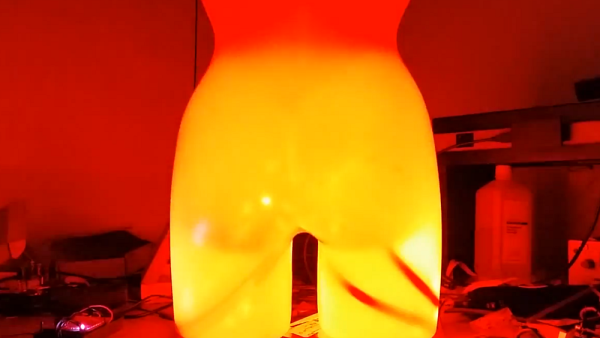[Trent] is one of those guys who can make things happen. A friend of his gifted him a mannequin derriere simply because he knew [Trent] would do something fun with it. “Something fun” turned out to be sound reactive LED butt. At first blush, this sounds like just another light organ. This butt has a few tricks up its …. sleeve which warrant a closer look. The light comes from some off the shelf 5050 style RGB LED strip. The controller is [Trent’s] own design. He started with the ever popular MSGEQ7 7 Band Graphic Equalizer Display Filter, a chip we’ve seen before. The MSGEQ7 performs all the band filtering and outputs 7 analog levels corresponding to the amplitude of the input signal in that band. The outputs are fed into an ATTiny84, which drives the RGB strip through transistors.
The ATTiny84 isn’t just running a PWM loop. At startup, it takes 10 samples from each frequency band. The 10 samples are then averaged, and used to create a noise filter. The noise filter helps to remove any ambient sound or distortions created by the microphone. Each band is then averaged and peak detected. The difference between the peak and the noise is the dynamic range for that band. The ATTiny84 remaps each analog sample to be an 8 bit value fitting within that dynamic range. The last step is to translate the remapped signal values through a gamma lookup table. The gamma table was created to make the bright and dark colors stand out even more. [Trent] says the net result is that snare and kick drum sounds really pop compared to the rest of the music.
Without making this lamp the butt of too many jokes, we’d like to say we love what [Trent] has done. It’s definitely the last word in sound reactive lamps. Click through to see [Trent’s] PCB, and the Butt Lamp in action.
Continue reading “The Butt Lamp: Light From Where The Sun Don’t Shine”















